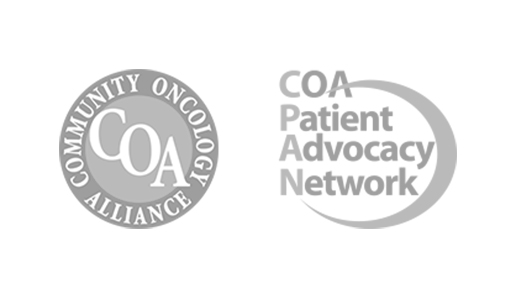May is “Melanoma Awareness” month, which serves as a reminder of how critical it is to protect your skin year-round from harmful UV rays and perform regular skin screenings. Though melanoma accounts for only 1% of total skin cancers diagnosed in the U.S., it’s the most deadly of skin cancers, causing thousands of deaths each year.
Fortunately, melanoma can be prevented through consistent efforts toward proper skin care and protection, as well as healthy sun habits. In addition, treatment for melanoma has seen many advancements in recent years, providing hope and healing for melanoma patients.
Who Does Melanoma Affect?
Melanoma prevention is something that people of all ages should be concerned with. Although the risk of melanoma increases with age, young people aren’t immune from this dangerous disease, and prevention should begin at an early age.
Anyone who exposes themselves to excessive amounts of sunshine or tanning beds and doesn’t take the right measures to protect themselves from harmful UV rays is putting themselves at risk of developing skin cancer.
Race and ethnicity are also big factors in determining whether or not a person will develop melanoma. Those with darker skin have higher amounts of melanin and are at a lower risk. (Even though darker skin is less prone to developing melanoma, cancer can still develop on skin areas with less pigment such as the palms of the hands or soles of the feet.) White men are most likely to get melanoma, with American Indians, Hispanics, Pacific Islands are black men following behind.
An increase of the risk of melanoma is also present in those who have a family history of skin cancer, those who have birthmarks, moles and/or freckles, or those who have been diagnosed with the disease in the past.
Melanoma Awareness Means Prevention
Prevention is your primary line of defense against melanoma. There’s a lot you can do to protect your skin and prevent over-exposure to harmful UV light. UV radiation can come from both sunlight and artificial sources which include tanning beds.
Specific steps you can take to protect yourself include:
Wear Sunscreen Regularly
-Wearing sunscreen on all of your exposed skin every day, year-round. Many people mistakenly believe that they can skip the sunscreen on cloudy days, but this is not the case. UV rays are present on cloudy days as well.
Sunscreen should have an SPF of at least 30 while providing a broad spectrum of protection both from UVB rays and UVA rays.
-Apply sunscreen regularly throughout the day! This means you should first apply it at least 15 minutes before you go out in the sun. Follow up with a reapplication every 2 hours or immediately after sweating or swimming.
-Remember that wearing sunscreen doesn’t make you invincible and you should still limit your time in direct sunlight instead of spending hours in the sun.
– The rays of the sun are most dangerous between the hours of 10:00 a.m. and 4:00 p.m. so plan your activities accordingly. Try to schedule your outdoor activities earlier in the morning or in the evening when you can.
– Don’t forget that it’s often in the unexpected places where melanoma develops, so don’t neglect to put sunscreen on the skin on your feet, ears, in between your toes, on your fingers or on your scalp.
– Take extra special care not to get sunburned. Children are especially susceptible to the dangers of severe sunburns. Just one blistering burn can double the chances of developing melanoma years down the road.
Wear Protective Clothing and Accessories
– Protective clothing can do a lot to keep you safe in the sun as well. Opt for a hat that shades not only the front of your face, but the back of your neck and ears as well. You can find UV protective shirts with long sleeves to keep you covered.
– Be aware of your eyewear and choose sunglasses not just for style but also for functionality. Shades that protect the sides of your eyes, as well as the front, are best.
Look Out for Harmful Habits
– Though tanning bed establishments often try to convince patrons that tanning isn’t harmful, this simply isn’t true. There is no way to expose yourself to UV light without putting yourself at risk of developing skin cancer. For this reason tanning beds should be avoided, always.
– Seek the shade whenever you can while outdoors, especially between 10 a.m. and 4:00 p.m. If you’re planning a day at the beach, bring a large beach umbrella to sit beneath. If you’re going to the park, look for some tall trees to sit beneath.
– Be aware of reflective surfaces that can amplify the sun’s strong rays. Snow, sand, and water are all reflective and spending time near them when the sun is high can increase your chance of getting burned.
Monthly Skin Checks Are Crucial
Early detection makes all the difference when it comes to treating melanoma which is why monthly self-examinations are paramount. Checking your own body means looking everywhere, so get those handheld mirrors out and be thorough.
Check between fingers and toes, behind ears, on your back, at the back of your neck, etc. You may need to enlist the help of a friend or partner to help you check.
Look for new growths or changes in preexisting moles. Anything that looks questionable should be checked out by a dermatologist as soon as possible.
In addition to checking yourself every month, make an appointment with a dermatologist once a year for an examination. This appointment could end up saving your life as it has for thousands of other patients of all ages. Your dermatologist knows just what to look for when it comes to questionable skin growths and potential cancer.
Find a Qualified Dermatologist
Now that you know the importance of protecting yourself, conducting regular self-checks and seeing a dermatologist every year, find a doctor who can help you in your efforts toward melanoma awareness and prevention.
The expert oncology team at AO Multispecialty Clinic can answer all of your melanoma-related questions and address your medical concerns with professionalism and care.
Learn more about our expert team of providers and how they can help you.






